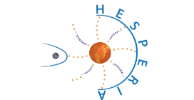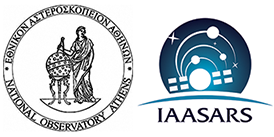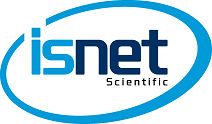The Observatoire de Paris participates in HESPERIA with two departments: [a] Laboratoire d'Etudes Spatiales et d 'Instrumentation en Astronomie (LESIA, UMR 8109), Solar Physics Group and [b] Centre de Sciences Nucléaires et de Sciences de la Matière (CSNSM), Nuclear Astrophysics Group (henceforth referred to as CNRS-CSNSM).
The solar physics group at Paris Observatory/LESIA is working on the physics of energy conversion in the solar atmosphere and the consequences of these processes on the Sun-Earth system. It has extensive expertise in the measurement and modelling of solar magnetic fields, and in the analysis of radio, X-ray and gamma-ray data relevant to particle acceleration in solar flares. The group operates instruments in optical and radio astronomy (Nançay Radioheliograph), and has the scientific responsibility for the neutron monitors at Kerguelen Island and Terre Adélie (the technical responsibility is with the French Polar Institute, IPEV). It is involved as (science) Co-Is in many space missions (Ulysses, SOHO, RHESSI, STEREO, Solar Orbiter), and has been essential in the exploitation of hard X-ray and gamma-ray observations of the Sun in France since the 1970s (ISEE 3, SMM, Phebus/GRANAT, RHESSI; INTEGRAL/ACS). It has developed intense research on the origin of solar energetic particle events by combining these remote sensing diagnostics with in situ measurements, and has contributed in recent years to severalFP7 projects: in particular in the field relevant to HESPERIA NMDB, SEPServer, HESPE. The solar physics group is also in charge of a data base of whole Sun and patrol observations (optical, radio).
The LESIA Laboratory (Laboratoire d’Etudes Spatiales et d’Instrumentation en Astrophysique –Solar Physics Group), which is involved in the project, is a Joint Research Unit legally depending both from Observatoire de Paris and CNRS. The CSNSM (Centre de Sciences Nucléaires et de Sciences de la Matière, Nuclear Astrophysics Group), which is a Joint Research Unit of CNRS, will also participate to the project.
The Centre de Sciences Nucléaires et de Sciences de la Matière (CSNSM) is a joint research laboratory of the nuclear- and particle physics institute (IN2P3) of CNRS and the University of Paris Sud, located at Orsay. Its human potential consists of 80 permanent researchers, engineers and technicians and is organized in eight research teams working in the fields of solid-state physics, nuclear physics and astrophysics. The nuclear astrophysics group of the CSNSM has a long experience in nuclear physics measurements dedicated to astrophysics. The team is also actively working since over a decade on X-ray and gamma-ray astronomy. The CSNSM was involved in the ground calibration of the INTEGRAL spectrometer SPI and the study of in-flight background lines. The group was also strongly involved in the observation of solar gamma-ray emissions with the SPI and its Anti-Coincidence shield and the analysis of the gamma-ray spectra and light curves. Part of this work has been done in the framework of a FP7 project in the field relevant to HESPERIA: SEPServer. The group continues actually to look for solar flare gamma ray emissions and carries also a search for nuclear interaction lines from cosmic-ray interactions in our galaxy with SPI.

 hesperia [dot] info [at] hesperia-space [dot] eu
hesperia [dot] info [at] hesperia-space [dot] eu










